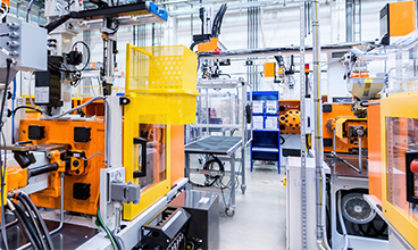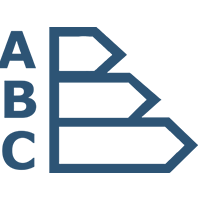Energy efficiency
Industrial buildings
Industrial buildings
Identify where, when, and how energy is consumed and then determine the energy saving measures to be put in place.

In an industrial building, there are many sources of consumption. The diversity of these sources of overconsumption can lead to significant energy expenditure. The major challenge for managers in industrial buildings (factories, airports, ports, hospitals, etc.) is to identify where the largest items of expenditure are located in their building and to optimise the operation of the equipment in question. It is essential for them to have tools that enable to:
Energy data collection (water, gas, electricity, thermal) is carried out using IoT adeunis sensors connected to the industrial equipment to be supervised. They monitor the evolution of fluids, detect overconsumption and alert in case of leaks.
The indoor/outdoor gateways receive the data transmitted by the Adeunis’ sensors and relay it to the ThingPark enterprise server via the LoRaWAN Actility network.
The server processes the data from the Adeunis’ IoT sensors and relays it in real time to the associated applications.
The data sent in the Opinum application which carries out automated procedures: viewing the data chronologically, editing reports, sending notifications, etc.
The IoT solution used makes it possible to monitor the evolution of electricity consumption and to detect possible points of over-consumption.
By analysing this data, it is then possible to detect points of improvement and to define an action plan to reduce consumption on a long-term basis.

The Modbus interface, which acts as a Modbus master, manages up to 20 slaves connected to a wired bus (RS232/RS485) in RTU (Remote Terminal Unit) mode. It allows the registers in the monitored MODBUS devices to be read and written through the LoRaWAN network.
An analysis of water consumption enables sources of savings to be identified.
The alert function in the event of overconsumption synonymous with potential leaks, allows you to act as quickly as possible to resolve the malfunction and thus avoid material and financial losses.

The PULSE sensor is directly connected to a machine or meter and counts the electrical pulses generated. The data is then communicated at a programmable frequency (e.g. every hour) via the LoRaWAN network.

Reducing energy costs

Improving energy efficiency

Optimising of the organisation
Discover the other uses of the IoT for more connected equipment
14/01/2021
expertise to support you, from the diagnosis to the implementation of your solution
Subscribe to our newsletter!
Your e-mail address is only used to send you our newsletter and information about our company. You can unsubscribe at any time using the link included in each email.
